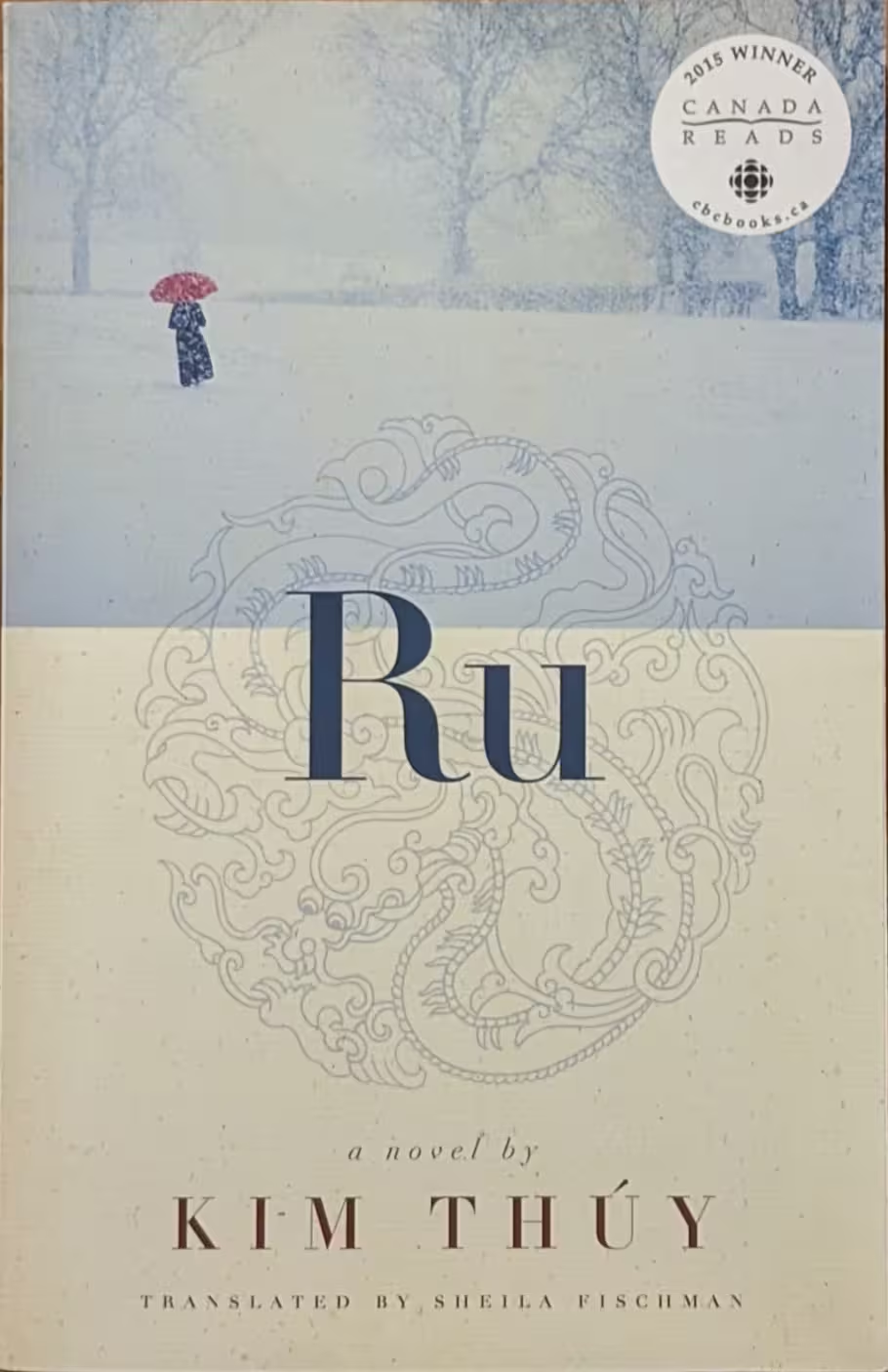I’ve mentioned the movie before (I watched it on an Air Canada flight), but I went and bought the novel last year (well, the English translation), and finally got around to reading it now. When I was buying the book, I forgot that the original text was in French, which of course I can read perfectly well. I’ll have to get the French version next time I’m in Canada. The other Viet diaspora book I need to get around to reading is Sunshine Nails, though that is Toronto-based, which I identify with less. As I think I’ve said before, the story in Ru closely parallels my parents’ journey, except that my parents left in 1971, before stuff got messy, on airplanes, via France.
- Kim Thúy. Ru. First edition, 2009; translated by Sheila Fischman, 2012.
Ru is a quick read, made up of a hundred or so short pieces of a page or two, with various scenes from the protagonist Tịnh’s life. I think I read the book faster than it took me to watch the movie (116 minutes).
Presumably it is closely based on the author’s life, with artistic license sometimes; but you never really know when there is something made up, as with any art.
The novel is mostly a superset of the movie. There are a lot of scenes and characters that are in the book but not the movie, like the protagonist’s visits to Hanoi and her children. (I think I said this before, but I can relate to the North Vietnamese/South Vietnamese dialect and culture gap; I also note that she always calls it Saigon and not Ho Chi Minh City).
The host family and Québécois in general felt more prominent in the movie, with a welcome-to-Quebec party and a scene with a host family event in a cabin some distance from town.
I thought the extended Québécois host family was a lot of people, but reviewing the trailer, it was only 8 people compared to Tịnh’s nuclear family of 4. In my case, 4 of my mother’s 6 siblings landed in Montreal when they immigrated (and lived in the same apartment), and my extended family gatherings were huge (20+), while my spouse’s Québécois family was also more like 8 people. The ratio is backwards compared to my experience. In the book it is Tịnh’s extended family that has Christmas gatherings when they are new to Canada, gathering in one place, while normally scattered.
There is a passage in the book where Tịnh writes about her American dream (yes, not just open to Americans); it had made her “more substantial, heavier, weightier” as compared to Vietnamese in Vietnam. (And yet it’s not like Vietnamese in Vietnam haven’t been busy collecting more $s.) I have talked to my cousin about how we can be immediately spotted as Việt Kiều, or overseas Vietnamese, even from the way we walk and dress, let alone speak. The book has more exploration of Tịnh’s identity as a young adult and visiting Vietnam, but it’s always hard to explore interior state in a movie.
In the movie, the fate of Tịnh’s cousin Sao Mai (the alpha cousin, as I put it) is unknown, and an important outstanding question; in the book she stays in Vietnam and becomes an important businesswoman and public personality. But the movie doesn’t go back to Vietnam. I guess that whole chapter of her life adds complexity in a way that is not worth it.
Overall, one could say that the movie preserves the central spirit of the movie—the main plot, as it were—and many of the important characters (though I think some of them are combined). I don’t remember the movie talking about sex at all, while it shows up in the book. Violence, of course, is in both, and can’t really be avoided in this context (after all, people left Vietnam for a reason.)
